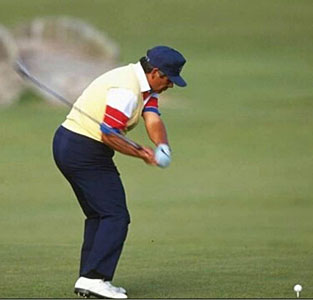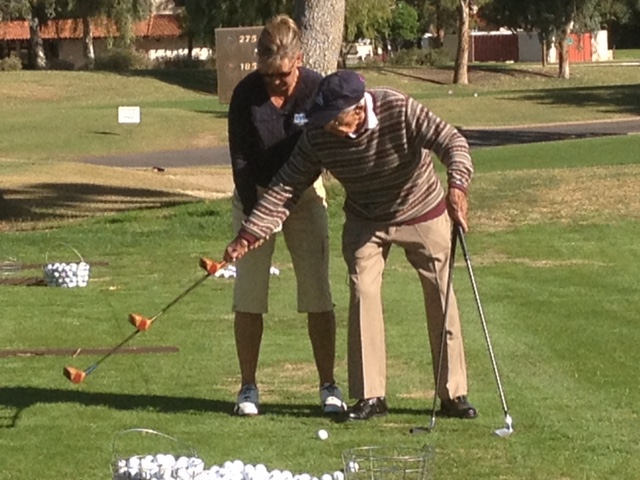Can’t remember who it was, Gardner Dickinson? that said when Hogan warmed up, his shots started right and then they would start progressively straight as his warm up continued.
He was also big on baseball and Ted Williams and ‘connection’. Biggest lesson I took from that is his right elbow. It is clearly behind his right hip but pinned behind his right hip from last parallel before impact to just after impact.
Being from the U.K. I was recently astonished to learn that ‘connection’ in baseball is different from golf although there is some overlap. Golf is widely taught as a physical connection of the upper arms to the chest. Basically learned that baseball it is more about the kinematics of the club and the physics of the gyroscope, and stress on the body sensed by the brain; by connecting the plane of the bat (golf shaft) 90 degrees to the spine from transition all the way through impact. And flattening the plane of the bat (golf club) towards the point of the right shoulder. When the right elbow dives in front this is apparently ‘bat drag’ and not ‘bat lag’. Tight, packed upper arms, the Ballard connection of the upper left arm to pec, the ‘Elbow to Elbow’ lesson Venturi said Hogan gave Frank Chirkinian, Babe Ruth, Sam Byrd handkerchief in left armpit: all make sense.
Also makes sense when in Maximum Golf John Schlee said Hogan said all pull shots left you didn’t slot the club; all shots push right you didn’t turn level, you slid. And in my profile pic you see that deep, deep slotting of the club whilst the body is still torqued right, saving its work until much later.
If you take that ‘club down his back’ attitude back to a reference frame of impact, it is at that point torqued way back and wide open. He then loads that right elbow in transition even more and establishes baseball’s connection. It demands a lot of work from there to shut the clubface to reasonably square. A lot of modern instruction says ‘don’t have the club lagged back and torqued open so you don’t need to do the work’. I think that is mitigating clubhead throwaway and loss of stress in the shaft.
All of which - right elbow behind the hip being called stuck - is viewing the swing through a 2D perspective; giving precedence to 2D geometry over the physics and dynamics of managing the elasticity of energy in the club, the body and of the collision with the ball.
It’s more athletic to swing in the manner of a Ben Hogan (and Knudson, and Trevino, and Furyk and others). Being ‘stuck’ is an important dynamic. Hogan actually internally rotated his right upper arm in transition transition.
I’ve always felt you have to have ‘pull’ in the golf swing to have lag and a stable clubface. In Pelz’s short game bible he promotes ‘pull’ by longer followthroughs. Percy Boomer said it was pivot. Homer Kelley said shaft stress. Ben Hogan said the shaft was ‘90% of it’. He supposedly told Weiskopf it was a connected pivot. Burke said Demaret said it was shaft stress. Schlee said it was lagging the clubhead with a leading right elbow.
For me I can hit any club, including driver, off a tight lie, if I’m pulling. Pulling via pivot rotation not handle drag pull. If the clubhead is thrown then it could be fat, thin, loss of low point and divot control. Loss of stress sensed in my right hand mainly.
Again, getting ‘stuck’ helps in so many ways.

